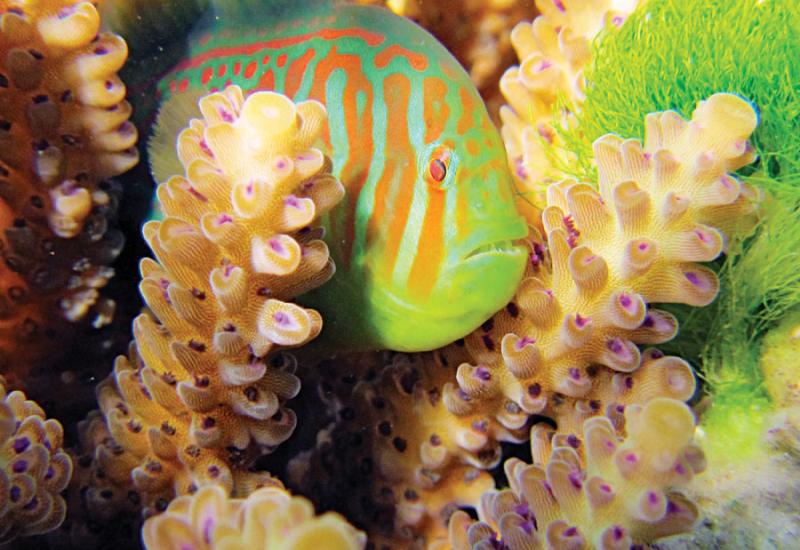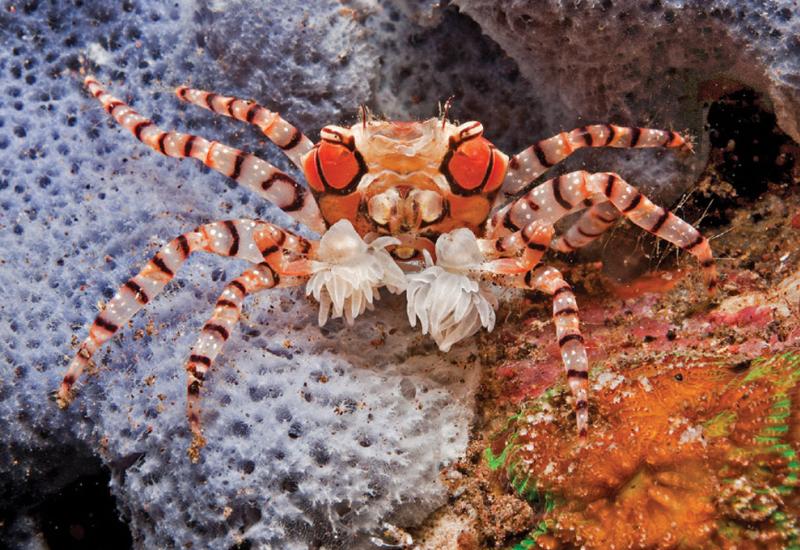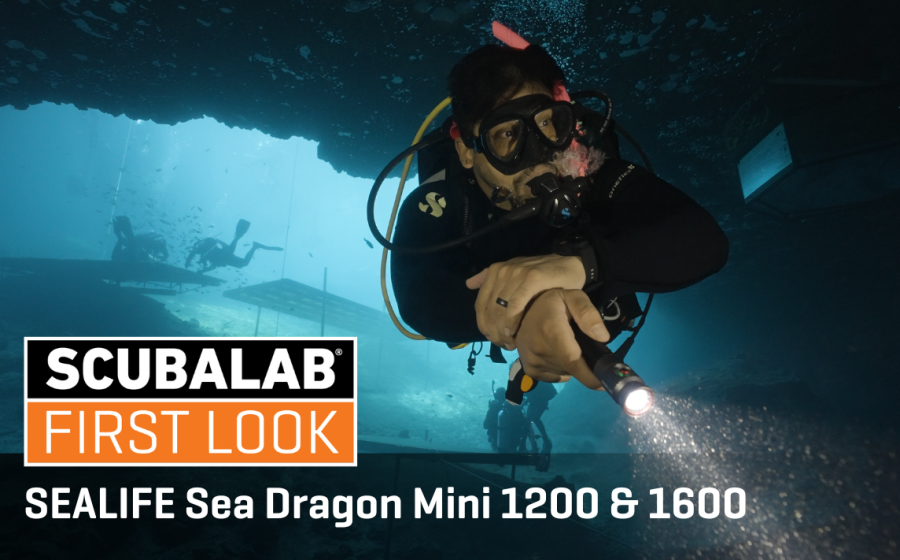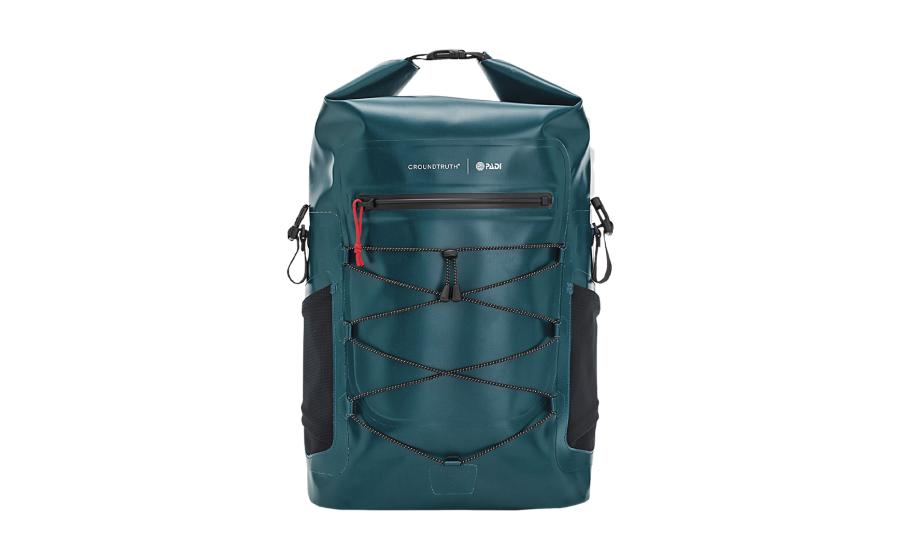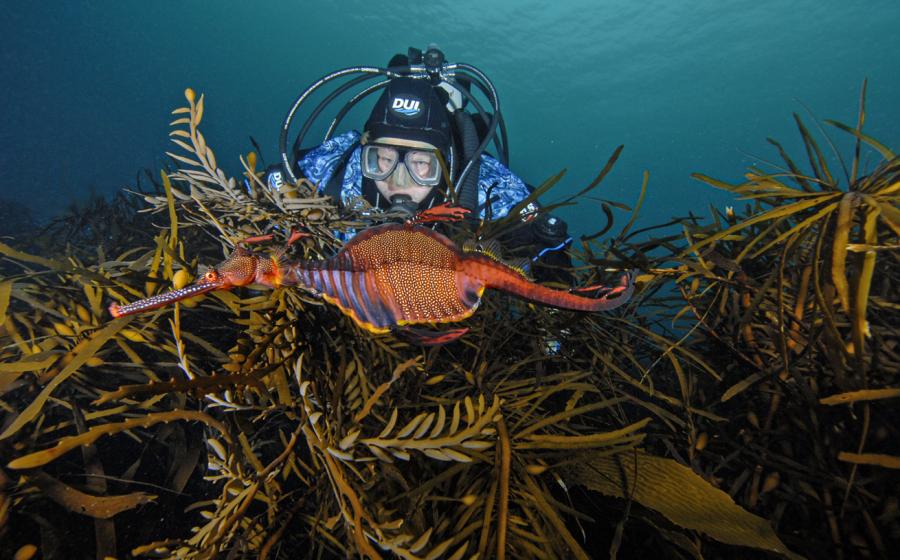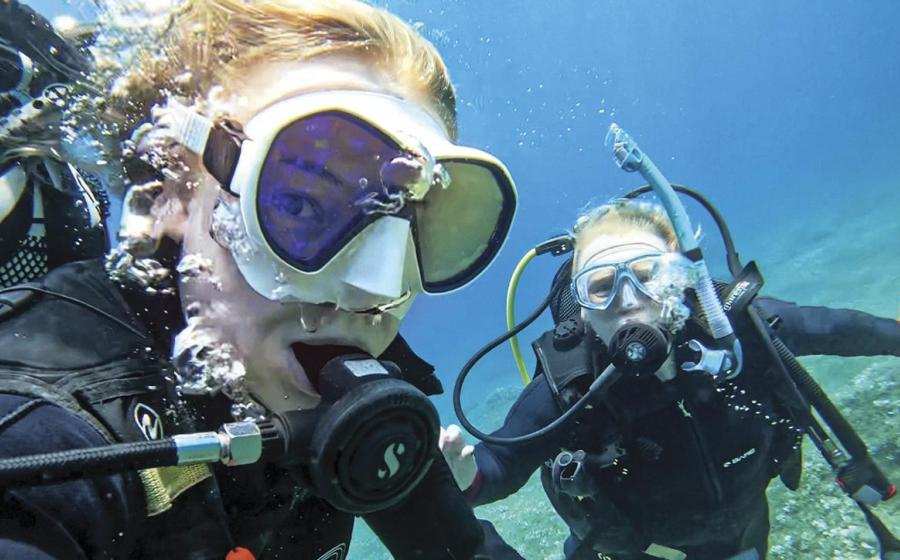Video: Critter Hunt: The Hitchhiker
There are thousands of exotic marine species waiting to be discovered; finding them is one of the most challenging games in the sea — an addictive sport called critter hunting.
To find a spotted porcelain crab, Porcellana sayana, you have to know exactly where to look.
In the sea, many critters live in associations with host animals. These symbiotic relationships often create some surprising confederations.
The little Caribbean crustacean we’re looking for lives in a garden of sea anemones that grow on the shells of star-eye hermit crabs. So to find the porcelain crab, you first have to find a star-eye hermit crab, and they tend prowl at night.
Discovering a fist-size hermit all decked out in anemones is well worth a night dive alone, but sighting the beautiful half-inch porcelain nestled next to an anemone stalk is a genuine thrill. Not much is known why these particular species cohabitate; whatever the reasons, they must be important.
Each time the hermit molts, it moves into a larger shell. After finding a vacant shell to its liking, the hermit painstakingly pincers off the anemones, including their crabs, and places them on top of its new abode.
Everyone wins: The anemones provide the porcelain crab a place to hide, and the hermit supplies a mode of transportation. It’s believed the hermit, like the porcelain crab, gains added protection from the anemones’ stinging tentacles. What, if anything, the anemones get out of the affair remains a mystery.
In April, halfway around the world in Indonesia, we discovered the same combination of animals living in the same improbable partnerships. But in this case, each participant is an entirely different species from its Caribbean counterpart, which we’ve seen in St. Vincent, the Virgin Islands and Bonaire. Not surprisingly, the Pacific porcelain crab is a species new to science.
Go Now Kungkungan Bay Resort
There are thousands of exotic marine species waiting to be discovered; finding them is one of the most challenging games in the sea — an addictive sport called critter hunting.
To find a spotted porcelain crab, Porcellana sayana, you have to know exactly where to look.
In the sea, many critters live in associations with host animals. These symbiotic relationships often create some surprising confederations.
The little Caribbean crustacean we’re looking for lives in a garden of sea anemones that grow on the shells of star-eye hermit crabs. So to find the porcelain crab, you first have to find a star-eye hermit crab, and they tend prowl at night.
Discovering a fist-size hermit all decked out in anemones is well worth a night dive alone, but sighting the beautiful half-inch porcelain nestled next to an anemone stalk is a genuine thrill. Not much is known why these particular species cohabitate; whatever the reasons, they must be important.
Each time the hermit molts, it moves into a larger shell. After finding a vacant shell to its liking, the hermit painstakingly pincers off the anemones, including their crabs, and places them on top of its new abode.
Everyone wins: The anemones provide the porcelain crab a place to hide, and the hermit supplies a mode of transportation. It’s believed the hermit, like the porcelain crab, gains added protection from the anemones’ stinging tentacles. What, if anything, the anemones get out of the affair remains a mystery.
In April, halfway around the world in Indonesia, we discovered the same combination of animals living in the same improbable partnerships. But in this case, each participant is an entirely different species from its Caribbean counterpart, which we’ve seen in St. Vincent, the Virgin Islands and Bonaire. Not surprisingly, the Pacific porcelain crab is a species new to science.
Go Now Kungkungan Bay Resort


